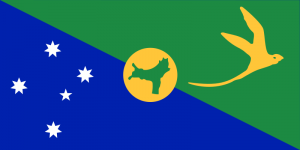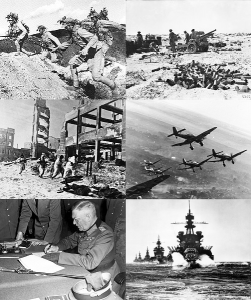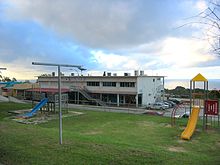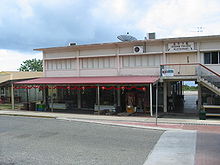Christmas Island

Christmas Island: Indian Ocean
The Territory of Christmas Island is a territory of Australia in the Indian Ocean. It is located 2,600 kilometres (1,600 mi) northwest of the Western Australian city of Perth, 360 km (220 mi) south of the Indonesian capital, Jakarta, and 975 km (606 mi) ENE of the Cocos (Keeling) Islands.
The Territory of Christmas Island is a territory of Australia in the Indian Ocean. It has a population of 2,072 residents who live in a number of “Settlement areas” on the northern tip of the island: Flying Fish Cove (also known as Kampong), Silver City, Poon Saan, and Drumsite. The majority of the population is Chinese Australian. It is called Christmas Island because it was discovered on Christmas Day.
The island’s geographic isolation and history of minimal human disturbance has led to a high level of endemism among its flora and fauna, which is of significant interest to scientists and naturalists. 63% of its 135 square kilometres (52 sq mi) is an Australian national park. There exist large areas of primary monsoonal forest.
Phosphate, deposited originally as guano, has been mined on the island for many years.
It has a population of 1,403 residents who live in a number of “settlement areas” on the northern tip of the island: Flying Fish Cove (also known as Kampong), Silver City, Poon Saan, and Drumsite.
History – First Visit by Europeans
Captain William Mynors of the Royal Mary, an English East India Companyvessel, named the island when he sailed past it on Christmas Day in 1643. The island was included on English and Dutch navigation charts as early as the beginning of the 17th century, but it was not until 1666 when a map published by Dutch cartographer Pieter Goos included the island. Goos labelled the island Mony, the meaning of which is unclear. English navigator William Dampier, aboard the English ship Cygnet, made the earliest recorded visit to sea round the island in March 1688. He found it uninhabited. Dampier gave an account of the visit which can be found in his Voyages. Dampier was trying to reach Cocos from New Holland. His ship was pulled off course in an easterly direction, arriving at Christmas Island 28 days later. Dampier landed at the Dales (on the west coast). Two of his crewmen were the first Europeans to set foot on Christmas Island.
Daniel Beekman made the next recorded visit, chronicled in his 1718 book, A Voyage to and from the Island of Borneo, in the East Indies.
Exploration and Annexation
The first attempt at exploring the island was in 1857 by the crew of the Amethyst. They tried to reach the summit of the island, but found the cliffs impassable.
During the 1872–76 Challenger expedition to Indonesia, naturalist Dr John Murray carried out extensive surveys.
In 1887, Captain Maclear of HMS Flying Fish, having discovered an anchorage in a bay that he named Flying Fish Cove, landed a party and made a small but interesting collection of the flora and fauna. In the next year, Pelham Aldrich, on board HMS Egeria, visited it for ten days, accompanied by J. J. Lister, who gathered a larger biological and mineralogical collection.
Among the rocks then obtained and submitted to Sir John Murray for examination were many of nearly pure phosphate of lime; this discovery led to annexation of the island by the British Crown on 6 June 1888.
Settlement and exploitation
Soon afterwards, a small settlement was established in Flying Fish Cove by G. Clunies Ross, the owner of the Cocos (Keeling) Islands (some 900 kilometres (560 mi) to the south west) to collect timber and supplies for the growing industry on Cocos.
Phosphate mining began in the 1890s using indentured workers from Singapore, Malayaand China. John Davis Murray, a mechanical engineer and recent graduate of Purdue University, was sent to supervise the operation on behalf of the Phosphate Mining and Shipping Company. Murray was known as the “King of Christmas Island” until 1910, when he married and settled in London.
The island was administered jointly by the British Phosphate Commissioners and District Officers from the United Kingdom Colonial Office through the Straits Settlements, and later the Crown Colony of Singapore. Hunt (2011) provides a detailed history of Chinese indentured labour on the Island during those years. In 1922, scientists unsuccessfully attempted to view a solar eclipse from the Island to test Einstein’s Theory of Relativity.
Japanese Invasion
 Clockwise from top left: Chinese forces in the Battle of Wanjialing, Australian 25-pounder guns during the First Battle of El Alamein, German Stuka dive bombers on the Eastern Front winter 1943–1944, US naval force in the Lingayen Gulf, Wilhelm Keitel signing the German Instrument of Surrender, Soviet troops in the Battle of Stalingrad
Clockwise from top left: Chinese forces in the Battle of Wanjialing, Australian 25-pounder guns during the First Battle of El Alamein, German Stuka dive bombers on the Eastern Front winter 1943–1944, US naval force in the Lingayen Gulf, Wilhelm Keitel signing the German Instrument of Surrender, Soviet troops in the Battle of Stalingrad
From the outbreak of South-East Asian theatre of war in Southeast Asia in December 1941, Christmas Island was a target for Japanese occupation because of its rich phosphate deposits. A naval gun was installed under a British officer and four NCOs and 27 Indian soldiers. The first attack was carried out on 20 January 1942 by the Japanese submarine I-59, which torpedoed a Norwegian freighter, the Eidsvold. The vessel drifted and eventually sank off West White Beach. Most of the European and Asian staff and their families were evacuated to Perth. In late February and early March 1942, there were two aerial bombing raids. Shelling from a Japanese naval group on 7 March led the District Officer to hoist the white flag. But after the Japanese naval group sailed away, the British officer raised the Union Flag once more. During the night of 10–11 March a mutiny of the Indian troops, abetted by the Sikh policemen, led to the murder of the five British soldiers and the imprisonment of the remaining 21 Europeans. On 31 March, a Japanese fleet of nine vessels arrived and the island was surrendered. About 850 men of the 21st and 24th Special Base Forces and 102nd Construction Unit came ashore and occupied the island. They rounded up the workforce, most of whom had fled to the jungle. Sabotaged equipment was repaired and preparations were made to resume the mining and export of phosphate. Only 20 men from 21st Special Base Force were left as a garrison.
Isolated acts of sabotage and the torpedoing of the Nissei Maru at the wharf on 17 November 1942 meant that only small amounts of phosphate were exported to Japan during the occupation. In November 1943, over 60% of the Island’s population was evacuated to Surabayan prison camps, leaving a total population of just under 500 Chinese and Malays and 15 Japanese to survive as best they could. In October 1945, HMS Rother reoccupied Christmas Island.
After the war, seven mutineers were traced and prosecuted by the Military Court in Singapore. In 1947, five of them were sentenced to death; however, following representations made by the newly independent governments of India and Pakistan, their sentences were reduced to penal servitude for life.
Transfer to Australia
At Australia’s request, the United Kingdom transferred sovereignty to Australia; in 1957, the Government of Australia paid the Government of Singapore £2.9 million in compensation, a figure based mainly on an estimated value of the phosphate forgone by Singapore.
Under Commonwealth Cabinet Decision 1573 of 9 September 1958, D. E. Nickels was appointed the first official representative of the new territory. In a media statement on 5 August 1960, the Minister for Territories, Paul Hasluck, said, among other things, that “His extensive knowledge of the Malay language and the customs of the Asian people… has proved invaluable in the inauguration of Australian administration… During his two years on the island he had faced unavoidable difficulties… and constantly sought to advance the island’s interests.” John William Stokes succeeded him and served from 1 October 1960 to 12 June 1966. On his departure he was lauded by all sectors of the island community. In 1968, the official secretary was re-titled an administrator and, since 1997, Christmas Island and the Cocos (Keeling) Islands together are called the Australian Indian Ocean Territories and share a single administrator resident on Christmas Island. Recollections of the island’s history and lifestyle, and lists and timetables of the island’s leaders and events since its settlement are at the World Statesmen site and in Neale (1988), Bosman (1993), Hunt (2011) and Stokes (2012).
The settlement of Silver City was built in the 1970s, with aluminium-clad houses that were supposed to be cyclone-proof.
The 2004 earthquake and tsunami centred off the western shore of Sumatra, Indonesia resulted in no reported casualties, but some swimmers were swept some 150 metres (490 ft) out to sea for a time before being swept back in.




